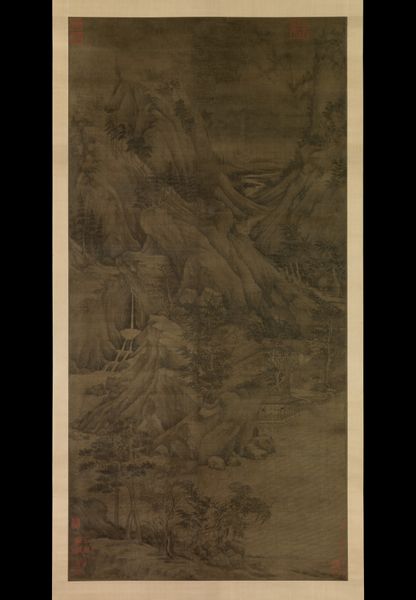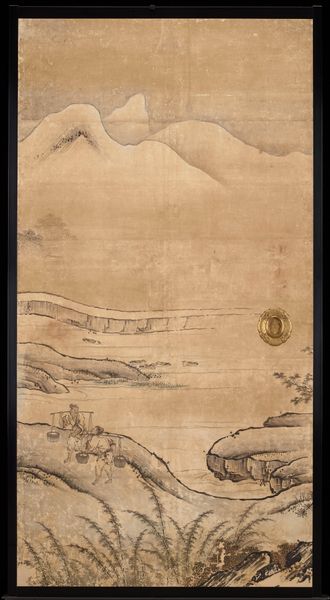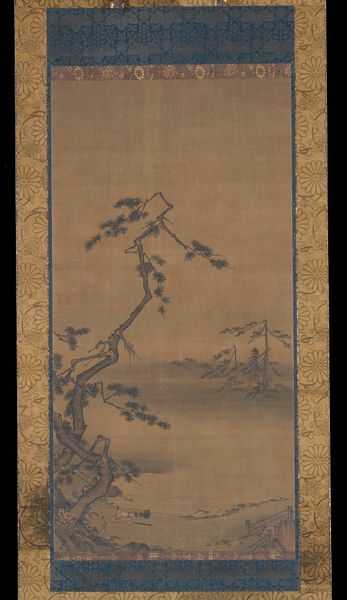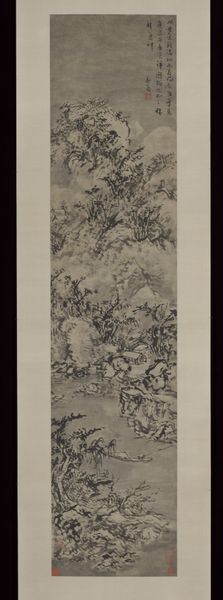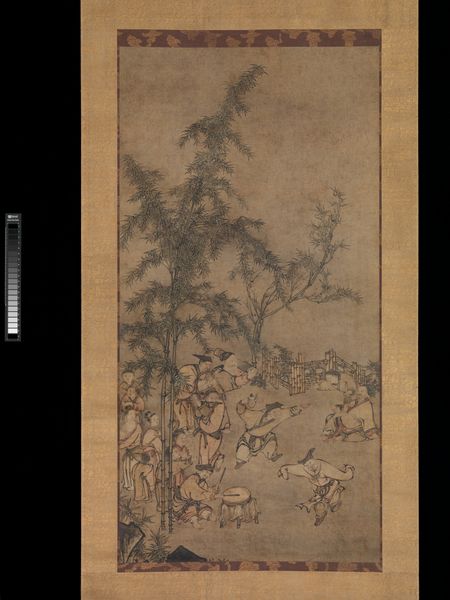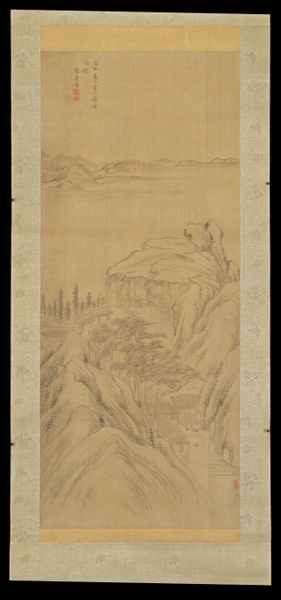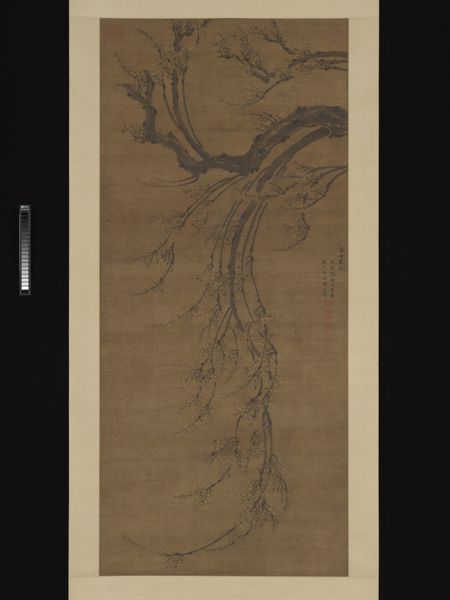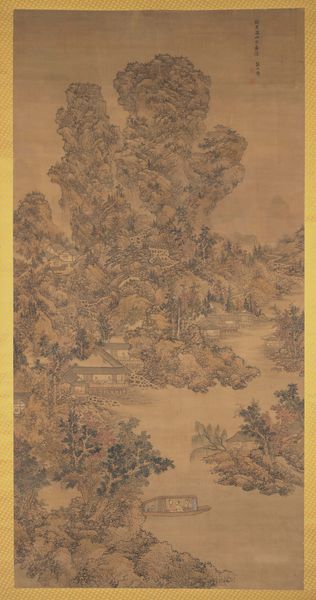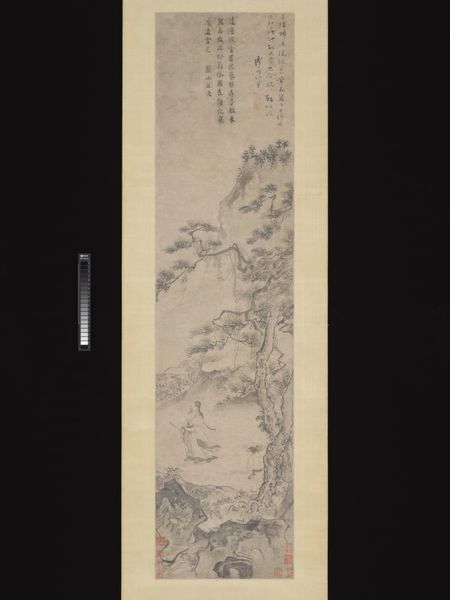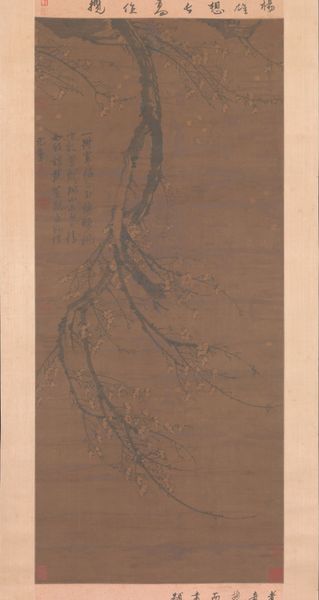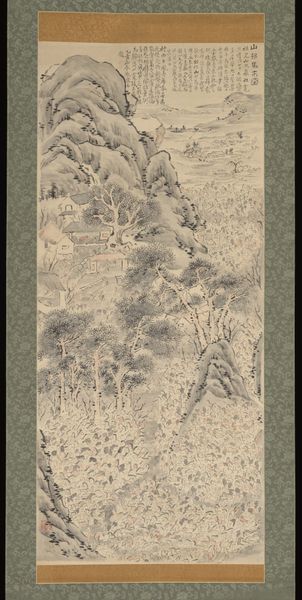
tempera, painting, ink
#
tempera
#
painting
#
asian-art
#
landscape
#
ink
#
history-painting
Dimensions: 88 3/8 × 62 1/2 in. (224.47 × 158.75 cm) (image)97 3/4 × 66 3/8 × 1 in. (248.29 × 168.59 × 2.54 cm) (overall, open)
Copyright: Public Domain
Editor: We're looking at "An Incident on the Hunt," a late 17th to early 18th-century piece attributed to Cheng Xiang, rendered in tempera and ink. The overall effect is so delicate; it feels like a fading memory. I'm curious, what pulls you in when you view a piece like this? Curator: Oh, the way history whispers, doesn’t it? It's less about a specific historical account and more about conjuring a mood – the thrill, the potential danger. It feels like a half-remembered epic poem. Does the composition strike you as intentionally... fractured? Editor: Fractured how? Curator: Notice how the mountains dwarf the figures, and the eye leaps between chaotic huntsmen and seemingly serene landscapes. It almost feels like the hunt itself is a disturbance on the grand tapestry of nature, don't you think? As if humanity's striving is merely a fleeting moment in an eternal cycle. And it appears on a folding screen, adding a sense of theatricality. What elements speak to that story most for you? Editor: I see that now. The screen format makes the incident seem more dramatic. The balance between the chaos of the hunt and the stillness of the landscape definitely emphasizes the hunt's impact as a fleeting moment. Thank you; I hadn't fully appreciated that perspective. Curator: Art, like a hunt, often reveals itself slowly, doesn't it? A chase of the eyes and mind combined! Editor: That's beautiful, thanks. I will definitely remember that image next time I view art in a gallery.
Comments
minneapolisinstituteofart almost 2 years ago
⋮
This monumental landscape, rendered in pure ink, shows a lively narrative. In the panel on the right, a high-ranking man on horseback, possibly the emperor, is shown receiving a message from a kneeling figure. Behind him, a cadre of elegant court women, also on horseback, look on. In the left panel, a group of scholars—separated by a rocky outcropping—engage in conversation. The painting may suggest that leaders, in order to effectively rule, must strike a balance between seeking the advice of scholars and engaging in various entertainments, like picnicking with women and hunting for sport (shown in the lower part of the painting).
Join the conversation
Join millions of artists and users on Artera today and experience the ultimate creative platform.

